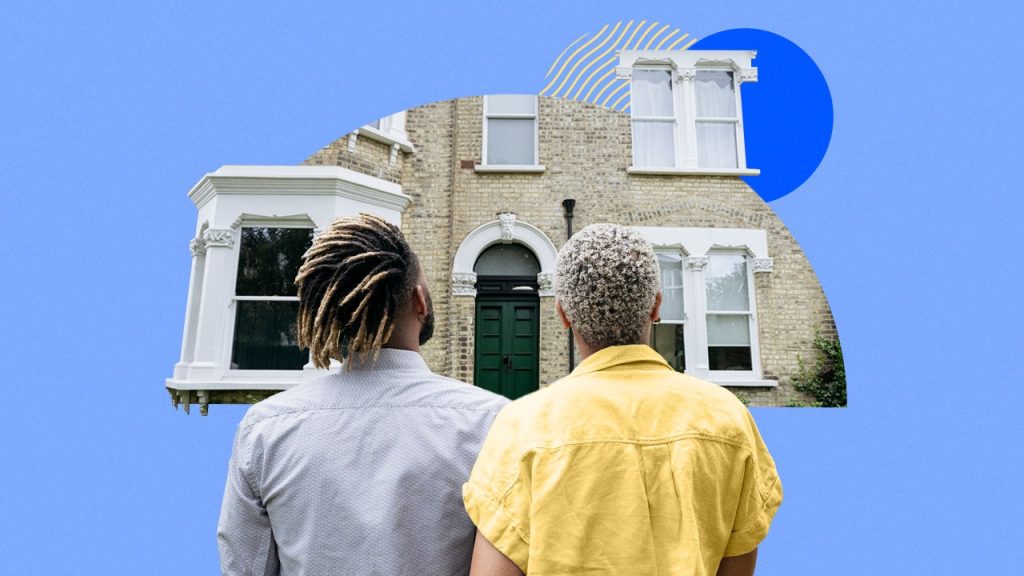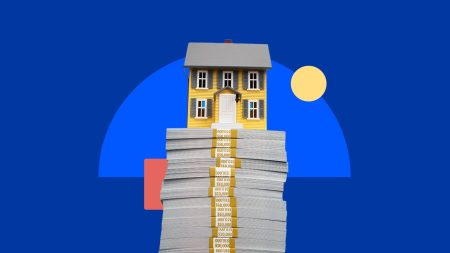JohnnyGreig/Getty Images: Illustration by Issiah Davis/Bankrate
Key takeaways
- Conventional loans are mortgages that aren’t guaranteed or insured by the U.S. government. They’re the most popular kind of mortgage, available from virtually all types of lenders, including banks and online lenders.
- This type of mortgage comes with a fixed or adjustable interest rate, and can be either conforming or nonconforming.
- Conventional loans typically require a 620 minimum credit score and at least 3 percent for a down payment.
What is a conventional loan?
A conventional loan is simply a mortgage that isn’t backed by the U.S. government. If you qualify, you can get this loan from many different types of mortgage lenders, including banks, credit unions and online originators. It’s the most common kind of mortgage.
Conventional loans have some stricter qualifying criteria compared to government-backed mortgages like FHA, VA and USDA loans, including a higher minimum credit score requirement. However, they’re more flexible in other ways, such as allowing for a low 3 percent down payment and larger loan sizes.
Conventional loans come in two main types:
- Fixed-rate: With a fixed-rate mortgage, your interest rate never changes; you’ll have the same monthly principal and interest payment for the length of the loan.
- Adjustable-rate: With an adjustable-rate mortgage, you’ll have a fixed introductory rate, after which the rate changes at preset intervals based on an index rate plus a margin determined by the lender.
Current conventional mortgage rates
Since October 2024, conventional mortgage rates haven’t strayed too far from the high 6s to 7 percent range, according to Bankrate data. They briefly dropped in the wake of the April 2025 tariffs announcement, and again in June 2025 due to geopolitical instability with Iran and Israel. Generally, mortgage rates tend to retreat in times of economic uncertainty.
Conventional loan requirements
To be approved for any type of mortgage, you’ll need to meet the lender’s credit and financial requirements. The requirements for a conventional loan include:
- Credit score: 620
- Debt-to-income (DTI) ratio: 45 percent (with exceptions up to 50 percent)
- Down payment: 3 percent for a fixed-rate loan; 5 percent for an adjustable-rate loan
- Loan limit: $806,500 for a conforming conventional loan on a one-unit property in most of the U.S.; up to $1,209,750 for the same type of loan and property in higher-cost areas
While conventional loans allow for as little as 3 percent down, you’ll pay private mortgage insurance (PMI) for anything less than 20 percent. The average monthly cost of PMI is 0.46 percent to 1.5 percent of the loan amount, according to the Urban Institute. You can request to cancel these premiums when your loan-to-value (LTV) ratio hits 80 percent.
Learn more: How to get rid of PMI
Your down payment can come from a variety of sources, including your own savings, a gift from a relative or friend or a down payment assistance program. Forty-four percent of current homeowners saved specifically for the down payment and closing costs on their first home, according to Bankrate’s 2025 Home Affordability Report.
Types of conventional loans
Conforming loans
A conforming mortgage adheres to certain guidelines around credit, loan size and other factors. For a conventional loan, those guidelines are set by the Federal Housing Finance Agency (FHFA), the regulator that oversees Fannie Mae and Freddie Mac. The FHFA standards include a 620 minimum credit score and the $806,500 loan maximum (in most locations).
If a conventional loan meets conforming standards, it’s eligible to be purchased by Fannie or Freddie, which then pool loans into mortgage-backed securities. This buy, package and sell process helps facilitate the flow of capital in the mortgage market, allowing lenders to continue to provide financing to borrowers.
Nonconforming loans
A conventional loan that doesn’t meet one or more of the FHFA conforming loan criteria is known as a nonconforming loan. One example of a nonconforming loan is a jumbo loan, a mortgage for an amount that exceeds the conforming loan maximum.
Non-qualified mortgages
Whether the conventional loan is conforming or nonconforming, it’s also subject to “ability to repay” guidelines that determine whether a borrower can reasonably afford the loan. However, some lenders extend financing even when a borrower’s credit or financial profile doesn’t meet these rules. This is known as a non-qualified mortgage, non-QM loan or subprime loan.
Learn more: Guide to 3 percent mortgages
Pros and cons of conventional loans
Pros
- Lower down payment requirement: For a fixed-rate conforming conventional loan, you’re only required to put 3 percent down. This down payment can come from your savings, a gift, a down payment grant or other sources.
- Cancellable mortgage insurance: Although you’ll pay for mortgage insurance if putting less than 20 percent down, you won’t pay these premiums forever.
- Financing for a range of needs: A conventional loan can be used to pay for a primary residence, investment property or second home. It can also be for a relatively large loan amount, at a fixed or adjustable rate.
Cons
- Higher credit score requirement: To get a conventional loan, you’ll need a credit score of at least 620.
- Potential for higher interest rates: Your specific rate depends on many factors, but sometimes, conventional loans have slightly higher rates compared to government-backed options.
- Scrutiny of past hardship: If you’ve experienced bankruptcy or foreclosure, you’ll need to wait a longer period before applying for a conventional loan compared to other types of mortgages: two to four years after bankruptcy and three to seven years after foreclosure.
Conventional loans vs. government loans
Conventional loans are the most popular kind of mortgage, but they aren’t the only type of financing. Here’s how they compare to government-backed options:
- Conventional vs. FHA loans: FHA loans, insured by the Federal Housing Administration (FHA), require at least 3.5 percent down, but a minimum credit score of just 580 (or 500 if putting 10 percent down). They, too, come with a mortgage insurance requirement if putting less than 20 percent down — but unlike the PMI on conventional loans, FHA mortgage insurance typically can’t be canceled or removed unless you refinance to a different type of loan.
- Conventional vs. VA loans: VA loans, guaranteed by the U.S. Department of Veterans Affairs (VA), are available to military service members, veterans and eligible spouses. VA loans don’t require a down payment in most cases, nor mortgage insurance. Unlike conventional loans, however, they can’t be used for an investment property or second or vacation home — only primary residences. They also charge a funding fee.
- Conventional vs. USDA loans: USDA loans, guaranteed by the U.S. Department of Agriculture (USDA), are for borrowers with lower to moderate incomes in specific rural-designated areas. They don’t require a down payment, but do charge a guarantee fee and annual fees.
What borrowers should know about conventional loans today
If you qualify for a conventional loan, it’s often the best choice. You’ll be able to make a lower down payment and avoid the mortgage insurance costs of an FHA loan.
A conventional loan might make your home offer more attractive, too, in part because the deal won’t be subject to the stricter property requirements imposed by government-backed loans. Additionally, there’s a perception — often not true — that government loans take longer and are more difficult to close, but this could vary depending on the property, the lender and how prepared the borrower is.
FAQ
Why we ask for feedback
Your feedback helps us improve our content and services. It takes less than a minute to
complete.
Your responses are anonymous and will only be used for improving our website.
Help us improve our content
Read the full article here












